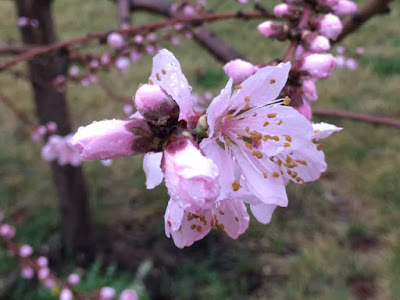Cytospora Disease in Stone Fruit
Cytospora is a common fungal disease that occurs in stone fruit. This disease is best prevented, but once introduced, it must be managed properly because chemical and organic treatments are not very effective. Identifying the symptoms of Cytospora is crucial for proper management of the disease and good cultural practices will ensure the best chance of your tree's survival.
Stone fruit, such as apricot, cherry, plum, nectarine and peach are the most susceptible to Cytospora infestations, but this disease may also be found in other fruiting and ornamental trees such as apples, pears, aspen, willows, and cottonwood trees. Cytospora is commonly found in many parts of the world where environmental conditions favor its spread. Prolonged periods of wet weather or high relative humidity will allow the fungi to take hold on your trees. During the dormant months, periods of warm weather will allow the disease to spread while the trees is unable do defend itself. The death of large limbs and branches occur when the disease is allowed to spread under the surface of the bark for the full circumference of the tree, causing it to girdle.
Because Cytospora is a microscopic fungal disease it is difficult to identify without a microscope. Identifying the symptoms of the disease is the best way to know if your trees might be infected. The most common symptom of the disease is gummy sap found on your tree's bark. Cytospora is also know as "gummosis" because of the bleeding found on the trunk and branches of it's hosts. Gummosis does not guarantee that your fruit trees are infected by Cytospora because physical damage to your tree or wood boring insects may also cause gummy wounds to appear.
 |
| Cytospora Symptoms Include Gummy Sap on Bark |
Because Cytospora is found under the bark, it is not easily treated. Good cultural practices like watering, fertilizing, and pruning will prevent the spread of the disease. Once the disease is introduced to your fruit trees, it is imperative that you follow the following guidelines to ensure proper management of the disease.
- Don't over water your trees or allow water to stand on bark and leaves
- Don't over fertilize your trees
- Prune your trees annually to minimize the need for pruning large branches
- Prune out dead, dying, damaged or diseased wood
- Make sure the ridge and collar are not damaged when removing branches
- Disinfect pruning tools before and during pruning
- Prune vertical branches at a slight angle to allow for water to quickly run off the pruning wound
- Avoid pruning too early, too late, or in wet weather
 |
| Avoid Pruning Fruit Trees in Wet Weather |
Healthy trees are better equipped to defend themselves from diseases like Cytospora. Do everything you can to prevent it and give your tree an upper hand with correct pruning, fertilizing, and watering practices. If Cytospora is identified in your trees, it will most likely remain present because of the ineffectiveness of chemical and organic treatments. If you have stone fruit trees and need help with the disease management, please visit our Backyard Fruit Growers Facebook page or subscribe to our Fruit Pruning Channel on YouTube.



Comments
Post a Comment